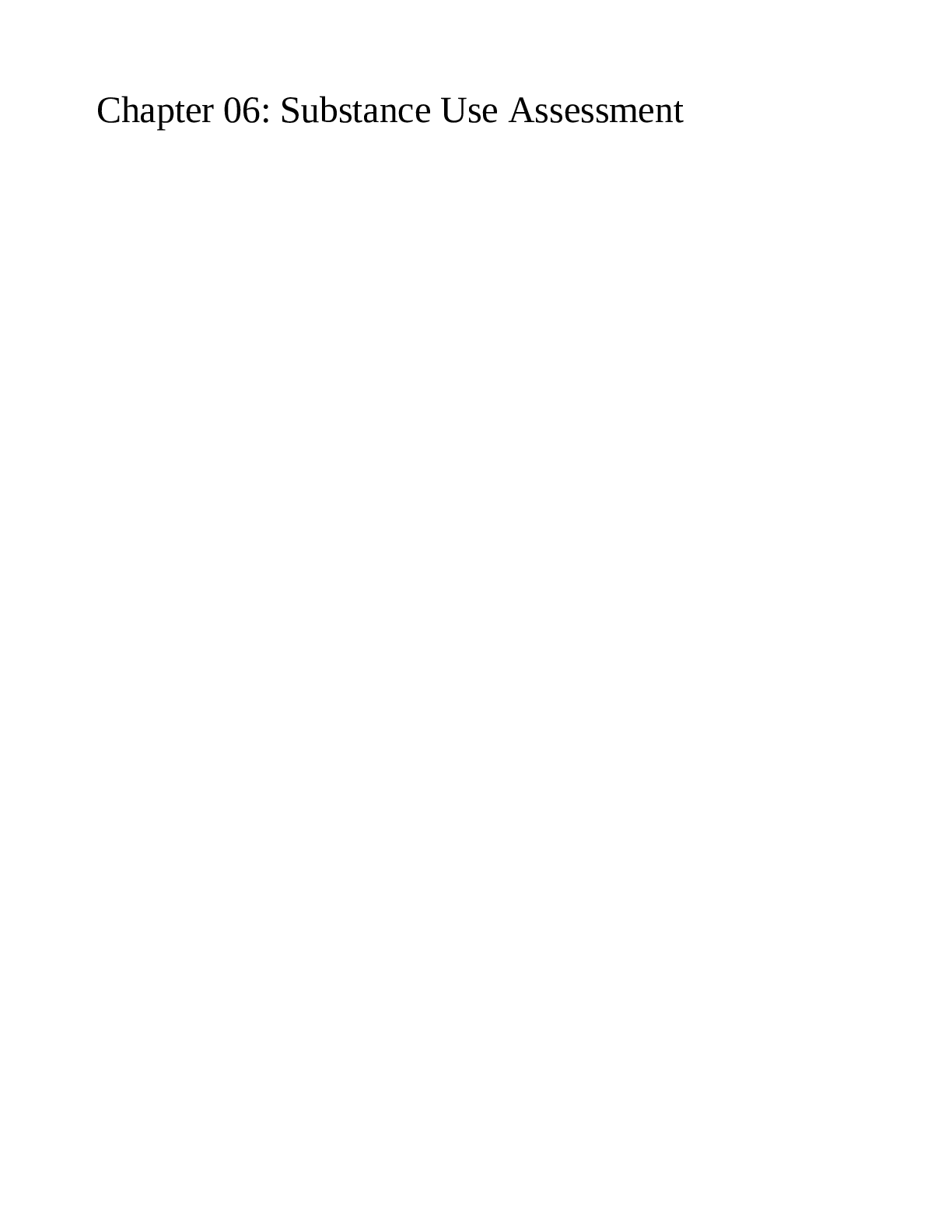Search for
Filter By
Rating
Price in $
Search Results 'Substance'
Showing All results
Sort by
*NURSING > TEST BANK > Which of the following would be the most likely cause of an iatrogenic disease? a. An inherited disorder b. A combination of specific etiological factors c. An unwanted effect of a prescribed drug d. Prolonged exposure to toxic chemicals in the environment The manifestations of a disease are best defined as the: a. subjective feelings of discomfort during a chronic illness. b. signs and symptoms of a disease. c. factors that precipitate an acute episode of a chronic illness. d. early indicators of the prodromal stage of infection. The best definition of the term prognosis is the: a. precipitating factors causing an acute episode. b. number of remissions to be expected during the course of a chronic illness. c. predicted outcome or likelihood of recovery from a specific disease. d. exacerbations occurring during chronic illness Which of the following is considered a systemic sign of disease? a. Swelling of the knee b. Fever c. Pain in the neck d. Red rash on the face Etiology is defined as the study of the: a. causes of a disease. b. course of a disease. c. expected complications of a disease. d. manifestations of a disease. A type of cellular adaptation in which there is a decrease in cell size is referred to as: a. hypertrophy. b. metaplasia. c. anaplasia. d. atrophy. A change in a tissue marked by cells that vary in size and shape and show increased mitotic figures would be called: a. metaplasia. b. atrophy. c. dysplasia. d. hypertrophy. A deficit of oxygen in the cells usually due to respiratory or circulatory problems is called: a. apoptosis. b. ischemia. c. hypertrophy. d. necrosis. When a group of cells in the body dies, the change is called: a. ischemia. b. gangrene. c. hypoxia. d. necrosis. Rigorous weight lifting/body building regimens may result in the skeletal muscle cells undergoing: a. hypertrophy. b. dysplasia. c. atrophy. d. regeneration. The term cancer refers to: a. dysplasia. b. hyperplasia. c. metaplasia. d. malignant neoplasm. To which of the following does the term apoptosis refer? a. Increased rate of mitosis by certain cells b. Ischemic damage to cells c. Liquefaction of necrotic tissue d. Preprogrammed cell self-destruction Which of the following statements is TRUE? a. Alteration of DNA does not change cell function. b. Damaged cells may be able to repair themselves. c. All types of cells die at the same rate. d. Mild ischemia causes immediate cell death. Caseation necrosis refers to an area where: a. cell proteins have been denatured. b. cell are liquefied by enzymes. c. dead cells form a thick cheesy substance. d. bacterial invasion has occurred. Routine application of sun block to skin would be an example of: a. an iatrogenic cause of cancer. b. a preventive measure. c. a precipitating factor. d. a predisposing condition. A circumstance that causes a sudden acute episode of a chronic disease to occur is termed
*NURSING > TEST BANK > Primary Care Art and Science of Advanced Practice Nursing - Test Bank, Chapter 65. Substance Use Disorders
*NURSING > EXAM > Chapter 6 Substance Use Assessment Jarvis Physical Examination & Health Assessment, 7th Edition.pdf
Pharmacology > STUDY GUIDE > 1.7 – Pharm: Substances Involved in Use Disorders Behavioral FDS
*NURSING > TEST BANK > PHYSICAL EXAMINATION AND ASSESSMENT TESTBANK BY JARVIS:Chapter 06: Substance Use Assessment
Business > CASE STUDY > RUA 1.docx NR: 103 Caring for Pregnant Women with History of Substance Abuse Chamberlai
Business > CASE STUDY > APA3 peer review.docx NR103 Caring for Pregnant Women with History of Substance Abuse
*NURSING > QUESTIONS & ANSWERS > Navigate 2 o Did I say use your test preps to study Medical Emergencies? This is a great resource written by the same publisher that created many of the test questions. Terminology and Medical Conditions o Ascites, jaundice, atelectasis, pleuritis, Biots respirations, agonal respirations, Cheyne Stokes respirations, hyperventilation, Internal Respiration, nocturnal dyspnea, erythropoiesis, Prinzmetal’s angina, Starlings Law, Preload vs. Afterload, Infarct, Ischemia, break through seizure, glycolysis, glycogenolysis, gluconeogenesis, glycogen, hyperglycemia, hypoglycemia, DKA, Insulin Shock, Diabetic Coma, polyphagia, polydipsia, polyuria, tolerance (as related to substance abuse), active listening, reflective listening, definitive listening, orthostatic hypotension, hypermetabolic state, angioedema, colic pain, hemipharesis, hemoglobin. Patient Assessment o It would be very difficult to give a specific review on this without giving a specific question. With that said, Know your patient assessment well and every little specific about it. History Taking Questioning patients during your assessment. Appropriate questions to ask based on the condition. SAMPLE and OPQRST Physical Exams DCAP BTLS Determining whether a medical patient is high or low priority Start memorizing vital signs in all age groups (page 440). Neurological assessments, GCS Scale
*NURSING > MED-SURG EXAM > FINAL CHAPTER 51 - 63//Chapter 51: Female Reproductive System Introduction, Chapter 52: Female Reproductive Disorders, Chapter 53: Male Reproductive System Introduction, Chapter 54: Male Reproductive Disorders, Chapter 55: Sexually Transmitted Infections, Chapter 56: Integumentary System Introduction, Chapter 57: Skin Disorders, Chapter 58: Special Senses Introduction, Chapter 59: Eye and Vision Disorders, Chapter 60: Ear and Hearing Disorders, Chapter 61: Psychobiological Disorders, Chapter 62: Substance Abuse, Chapter 63: First Aid, Emergency Care, and Disaster Management Linton: Medical-Surgical Nursing, 7th Edition(LATEST BUNDLE SOLUTIONS)
Health Care > QUESTIONS & ANSWERS > ATI Test Bank, Chapter 65. Substance Use Disorders, Primary Care Art and Science of Advanced Practice Nursing











